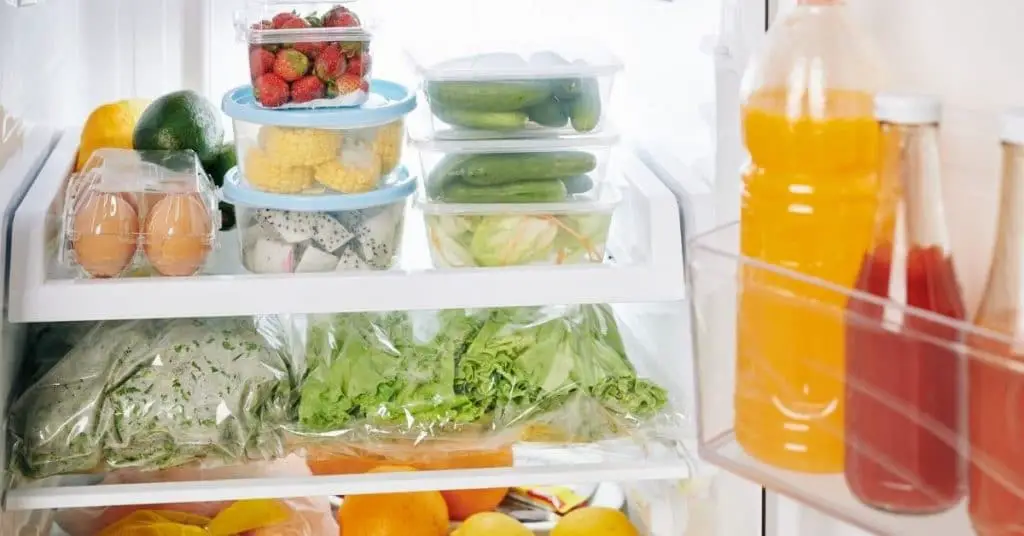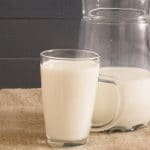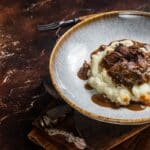Key points:
- Freezing leftovers is a smart way to save time and money, but it comes with uncertainties.
- Leftovers that freeze well include soups, casseroles, meats, bread, cookies, stews, and more.
- To freeze leftovers, cool them to room temperature, portion them, use airtight packaging, label with date and contents, and freeze.
- Thaw safely by putting in the fridge overnight or using warm water. Frozen food should be thawed before cooking.
- Pay attention to signs of deterioration like freezer burn, color/texture changes, or off-odors. Proper packaging and careful freezing yield easy and delicious future meals.
Freezing leftovers is a great way to save both time and money. Who wants to see perfectly delicious meals become food waste just because you can’t finish them before they go bad? When it comes to freezing leftovers there are however a bunch of uncertainties.
How long will leftover cooked food last in the freezer? Will freezing damage the food? How should leftovers be frozen? And can these leftovers even go in the freezer to begin with? Well, you’re in luck because below is a full guide to freezing and thawing leftovers.
Types of Leftovers That Freeze Well
Considering that ready-prepared meals have a variety of ingredients, it can be hard to tell exactly how well it will freeze and whether it will still be appetizing after thawing.
The formation of ice crystals, dehydration, and enzymatic activity are all factors that result in changes in food texture and flavor on freezing. Consider the composition of the meal you’d like to freeze in terms of varying textures, water content, and dairy content.
Leftovers That Freeze Well
Leftover dishes that generally do freeze well are soups, casseroles, meat and poultry, bread, cookies, baked goods, stews, curries, cooked rice, tomato sauce based pasta dishes, and hard cheese.
Leftovers That Can Be Frozen In Certain Applications
There are foods that freeze extremely well, foods that aren’t suitable for freezing at all and then there are other foods that can be frozen but will need to be used in a different application once thawed due to a change in texture. A good example of this would be leftover fruit salad.
Once thawed, the frozen fruit salad will turn into a mushy mix of fruit. The frozen fruit however can be great in a smoothie or used to make a fruit compote. So yes, the fruit salad can be frozen, but cannot be served as a fresh fruit salad again but rather incorporated into a new dish.
Other examples of these foods include spinach, onions, tomatoes and other fruits and vegetables with high water content, as well as soft cheeses (great for sauces and pasta after thawing).
Leftovers That Do Not Freeze Well
Ready-made dishes that contain the following ingredients will have an unappetizing texture after thawing and are best eaten fresh or stored in the refrigerator as opposed to being frozen:
Mayonnaise, cooked/boiled eggs, foods containing gelatin, and milk or cream-based sauces.
Can Leftovers Be Frozen?
Yes, many leftovers can be successfully frozen to enjoy at a later stage. It is however important to eliminate contact with air and moisture during the freezing process and to ensure that the food stays frozen at a consistent temperature below zero.
Always use airtight packaging as this will prevent foods from absorbing odors from surrounding food items.Once leftovers have been thawed, do not freeze the food a second time as this will increase the chance of harmful bacterial growth and the risk of food poisoning.
How to Freeze Freshly Cooked Foods and Leftovers
Step 1: Cool
Cooked food should always be cooled to room temperature before freezing. If hot food is frozen while still warm, large ice crystals form on freezing causing damage to cell walls and ultimately ruining the texture of the meal once thawed.
Step 2: Portion
Divide the leftovers into smaller portion sizes big enough for one or two servings. This way you can take out just as much as you need at any time without having to thaw and use the entire batch of cooking.
Step 3: Quick Freeze (Optional)
Smaller items such as meatballs, chicken pieces, cookie dough, or sliced fruit can be spread out on a lined sheet pan so that they don’t touch each other and popped into the freezer. Once frozen hard remove the items from the baking sheet and place them in plastic freezer bags. The quick freeze process prevents the pieces from clumping together.
Step 4: Pack
Place each portion into a zip lock freezer bag and press out as much air as possible before sealing to help avoid freezer burn. Note the tips below to ensure the leftovers are sufficiently packed:
- Wrap leftover meat in a double layer of plastic wrap, sealing all the corners so that there is no contact with air. Then place the wrapped meat in a freezer bag and seal. This prevents freezer burn by giving it an extra layer of protection.
- Use heavy-duty freezer bags as regular plastic zip lock bags may still allow air and moisture to penetrate the food.
- For liquid items such as soups, leave an inch headspace as the liquid will expand on freezing.
- If you prefer to use freezer-friendly airtight Tupperware, make sure that the lids seal completely. You can even wrap the container in a layer of plastic wrap for extra protection.
Step 5: Label and Freeze
Once the leftovers are packed and sealed, label the packaging with the date and contents using a permanent marker. This will help you keep track of how long your leftovers have been in the freezer.
How to Thaw Frozen Foods
The safest way to thaw leftovers is by removing the packet or container from the freezer and placing it in the fridge overnight to thaw. Once the frozen food is thawed, remove the packaging and proceed to heat it as needed.
Only heat as much as you need at a time as reheating thawed food more than once will make it prone to the growth of harmful bacteria. Always store food in the refrigerator once thawed and consume within 2 to 3 days.
Leftovers that you are going to add to a sauce, casserole, or smoothie can be added from frozen and can thaw during the cooking process or be blended as a frozen component. Baked goods such as bread can be thawed at room temperature. Due to its light and airy texture, bread thaws quickly at room temperature and can even be placed into the toaster from frozen.
If you do not have the time to wait for leftovers to thaw slowly in the refrigerator, fill a bowl with warm water and place the sealed frozen bag in the water to thaw.
Soups and casseroles can be reheated in a saucepan on the stovetop from frozen. Simply empty the block of frozen soup into the saucepan and heat on medium to low. Give it a stir while thawing so that it heats through evenly.
FAQs
How long do leftovers last in the freezer?
Leftovers can last in the freezer for about 2 to 6 months, depending on the type of food and how well it’s packaged to prevent freezer burn. Properly stored leftovers can maintain their quality and safety for an extended period.
Are food bacteria and enzymes destroyed during freezing?
No, freezing does not destroy food bacteria and enzymes; it only slows their activity. While freezing can extend the shelf life of food, some bacteria and enzymes can remain viable, becoming active again once the food is thawed.
Does freezing destroy the nutrient content of food?
No, when you freeze food it does not destroy the nutrient content in food, however, the heating process may.
Can you eat leftovers that have freezer burn?
Yes, freezer burn doesn’t make food unsafe to eat, but it does alter the color and ruin the quality. It is best to cut away the parts with freezer burn and only work with the rest.
How do you know if leftovers have gone bad during freezing?
You can tell if frozen leftovers have gone bad by looking for signs of freezer burn, changes in color or texture, and off-putting odors. If the food exhibits any of these indications, it might have deteriorated and should be discarded.
Why should frozen food be thawed?
Frozen food should be thawed before cooking to ensure even and safe cooking throughout the item. Thawing allows for more accurate cooking times, and better texture and reduces the risk of unevenly cooked or partially raw portions.
Conclusion
Never freeze leftovers that are on the edge of their expiry. Leftovers should preferably be frozen the same day the food was prepared or stored in the refrigerator. Carefully packing your leftovers for the freezer is well worth the time for effortless and delicious meals in the future, not to mention a huge time- and money-saver.
For more specific guides on how to freeze and thaw frozen foods, please check the following articles:
- Lettuce
- Kale
- Brussels Sprouts
- Cabbage
- Baked Beans
- Cantaloupe
- Pears
- Coleslaw
- Sauerkraut
- Potato Salad
- Smoked Salmon
- Salami
- Corned Beef
- Ham
- Cheesecake
- Angel Food Cake
- Brownies
- Fudge
- Marshmallows
- Banana Pudding
- Jello
- Cornbread
- Pecan Pie
- Eggnog
- Ricotta Cheese
- Cottage Cheese
- Feta Cheese
- Mozzarella Cheese
- Goat Cheese
- Almond Milk
- Half and Half
- Sour Cream
- Chicken Salad
- Egg Salad
- Macaroni and Cheese
- Meatloaf
- Pulled Pork
- Tortillas
- Gravy
- Guacamole
Photo by DragonImages/depositphotos









